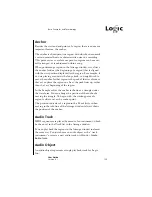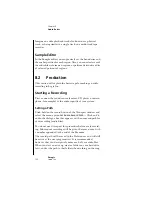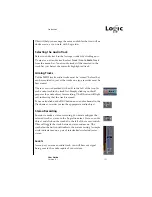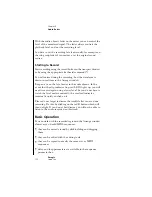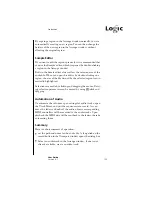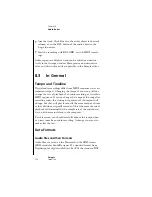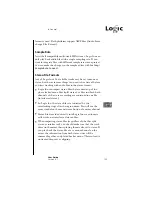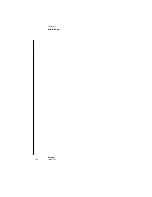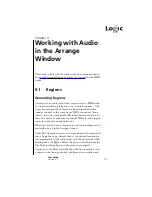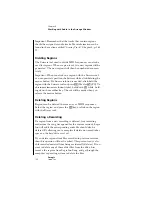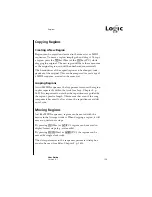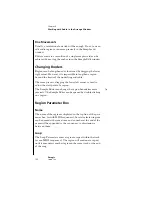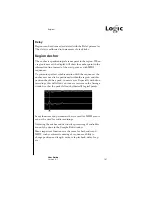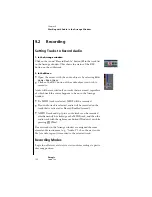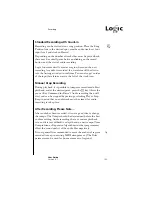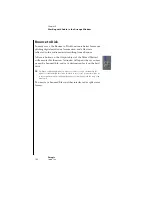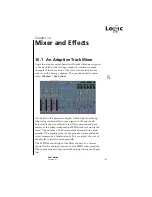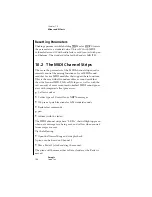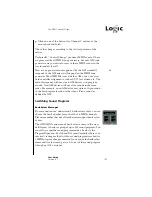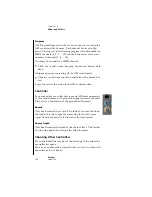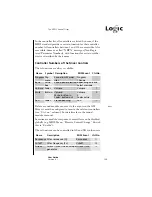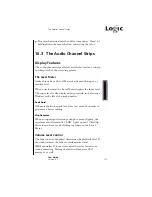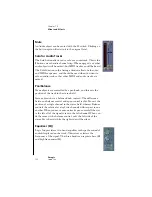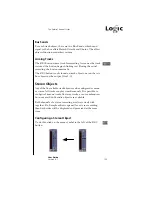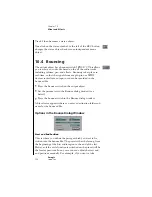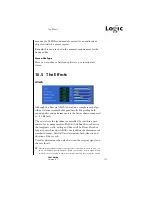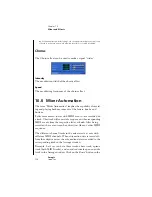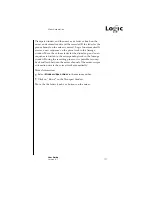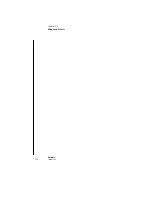
Recording
143
User Guide
Version 4.1
r
Standard Recording with Count-in
Recording can be started at any song position. Place the Song
Position line to the desired spot, arm the audio track, set your
input level, and click on Record.
Depending on the number of tracks that must be played back,
there may be a small pause between clicking on the record
button, and the start of audio recording.
Logic fun automatically creates a region, based on the new
recording. As audio is recorded, the waveform will be drawn
into the Arrrange window in real time. You can also get an idea
of the input levels in meters to the left of the track icon.
Manual Drop Recording
During playback, it is possible to jump into record mode. Start
playback, and at the desired point, press the
*
key (this is the
pre-set Key Command for Record). Audio recording then will
start, and can be stopped by pressing or clicking Play or Stop.
Keep in mind that an audio track must be armed, for audio
recording to take place.
After Recording, Please Note…
After audio has been recorded, it is not a good idea to change
the tempo. The Tempo should be determined before the first
audio recording. Audio recordings have a constant playback
rate, and it is very difficult to adapt them to a new tempo. Time
Compression or Expansion Algorithms in other programs may
affect the sound quality of the audio files negatively.
It is not generally recommended to move the anchors of regions
recorded into a pre-existing MIDI arrangement. (The Delay
parameter can be used for fine movements of regions.)
X
Tip
Summary of Contents for Logic fun
Page 1: ...E Sof t und Hard wa re Gmb H l User Guide for Logic fun Version 4 1 March 2000 English ...
Page 2: ......
Page 6: ......
Page 8: ...Emagic Logic fun 8 ...
Page 26: ...22 Chapter 1 Features Emagic Logic fun ...
Page 38: ...34 Chapter 2 Sound Cards and MIDI Emagic Logic fun ...
Page 48: ...44 Chapter 3 Getting Started Emagic Logic fun ...
Page 72: ...68 Chapter 4 MIDI Tutorial Emagic Logic fun ...
Page 96: ...92 Chapter 5 Using Logic fun Emagic Logic fun ...
Page 110: ...106 Chapter 6 Transport Functions Emagic Logic fun ...
Page 140: ...136 Chapter 8 Audio Basics Emagic Logic fun ...
Page 162: ...158 Chapter 10 Mixer and Effects Emagic Logic fun ...
Page 174: ...170 Chapter 11 The Event List Emagic Logic fun ...
Page 206: ...202 Chapter 13 The Score Editor Emagic Logic fun ...
Page 224: ...220 Chapter 15 Video and MIDI Files Emagic Logic fun ...
Page 240: ...236 Glossary Emagic Logic fun ...
Page 256: ...252 Index Emagic Logic fun ...

